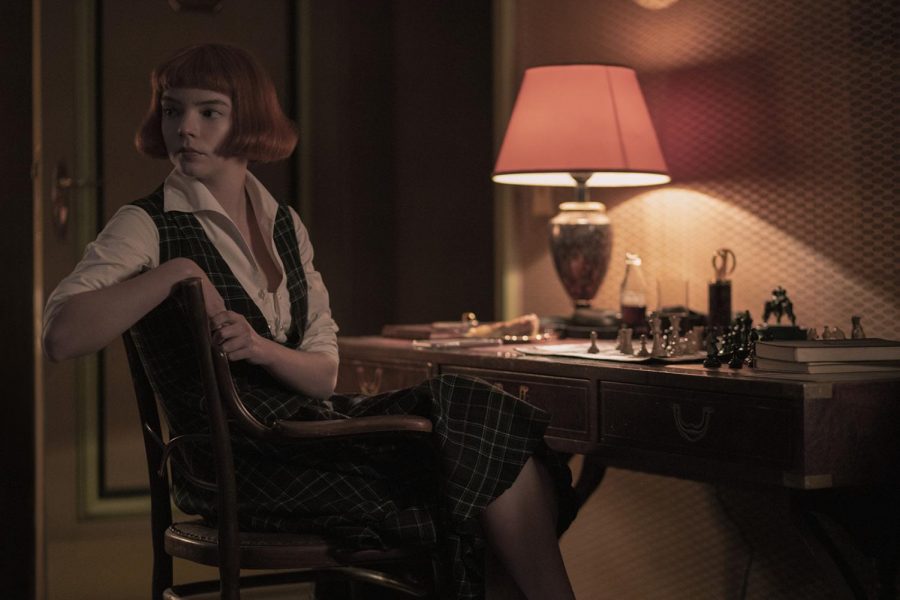“The Queen’s Gambit”: a mix of chess and drug addiction
Anya Taylor-Joy stars in “The Queen’s Gambit,” on Netflix.
December 2, 2020
Based on a book written by Walter Tevis in 1983, the TV show, “The Queen’s Gambit”, 2020, has been rising in popularity-and for good reason. It stars Anya Taylor-Joy as Beth Harmon, an orphaned Kentucky girl who discovers chess-and drugs-at her orphanage. The show follows her path to becoming the world’s best chess player while combating addiction and other emotional struggles. A headstrong and incredibly intelligent woman, Harmon is the ideal female hero. Her talents take her and the audience around the world, introduce her to complex characters, and create a riveting story that allowed me to procrastinate a bit too much.
While I’m not sure why I thought it was based on a true story, I was disappointed to find out that there was no truth to the plot or characters. It was off-putting to me that there would be a show about “the world’s greatest chess player”, but the player never existed-like if there was a movie about the first female president’s path to being elected, but she didn’t actually exist. Despite this, the show pulled me in immediately, even with the slow start. Beth as a child is not the most talkative character, but there are many things to pay attention to from the start of the show, like Harmon’s cold stare and composure, the complex characters she meets, and her evident talent as a chess player. People may be apprehensive of the show because they may find chess dull, but the show proves that chess is more than just a board game. Each game is shot excellently, building the anticipation and drama of each one.
The show is never incredibly fast-paced (except in games that move so quickly you wonder how someone can think so quickly) and some scenes are more drawn out than they need to be, but the storyline stays fresh with many different events, and keeps the audience locked in with the passion and excitement of Beth and other chess players. It was inspiring to see others pursuing what they love in life, despite challenges they face.
But the otherwise plot and emotional soundness does not pardon the “black best friend” (BBF). Used frequently in the media to add false diversity, a BBF allows for directors to stereotype black characters because they have examples of good black characters in the show. It’s the cinematic equivalent of saying “some of my best friends are black”, according to the Guardian. It also perpetuates the idea that black people are supposed to be supporting the main character, the white person.
What Sam is to Rick in Casablanca, Donkey is to Shrek in Shrek, and Dionne is to Cher in Clueless, Jolene, played by Moses Ingram, is to Beth in “The Queen’s Gambit”. It’s clear that Jolene’s purpose is to be the token black character, as the cast is white.
While a popular show for good reason, “The Queen’s Gambit” disappoints by including a BBF, one of the many ways the system is turned against black people in America, even in something as elementary as film.














